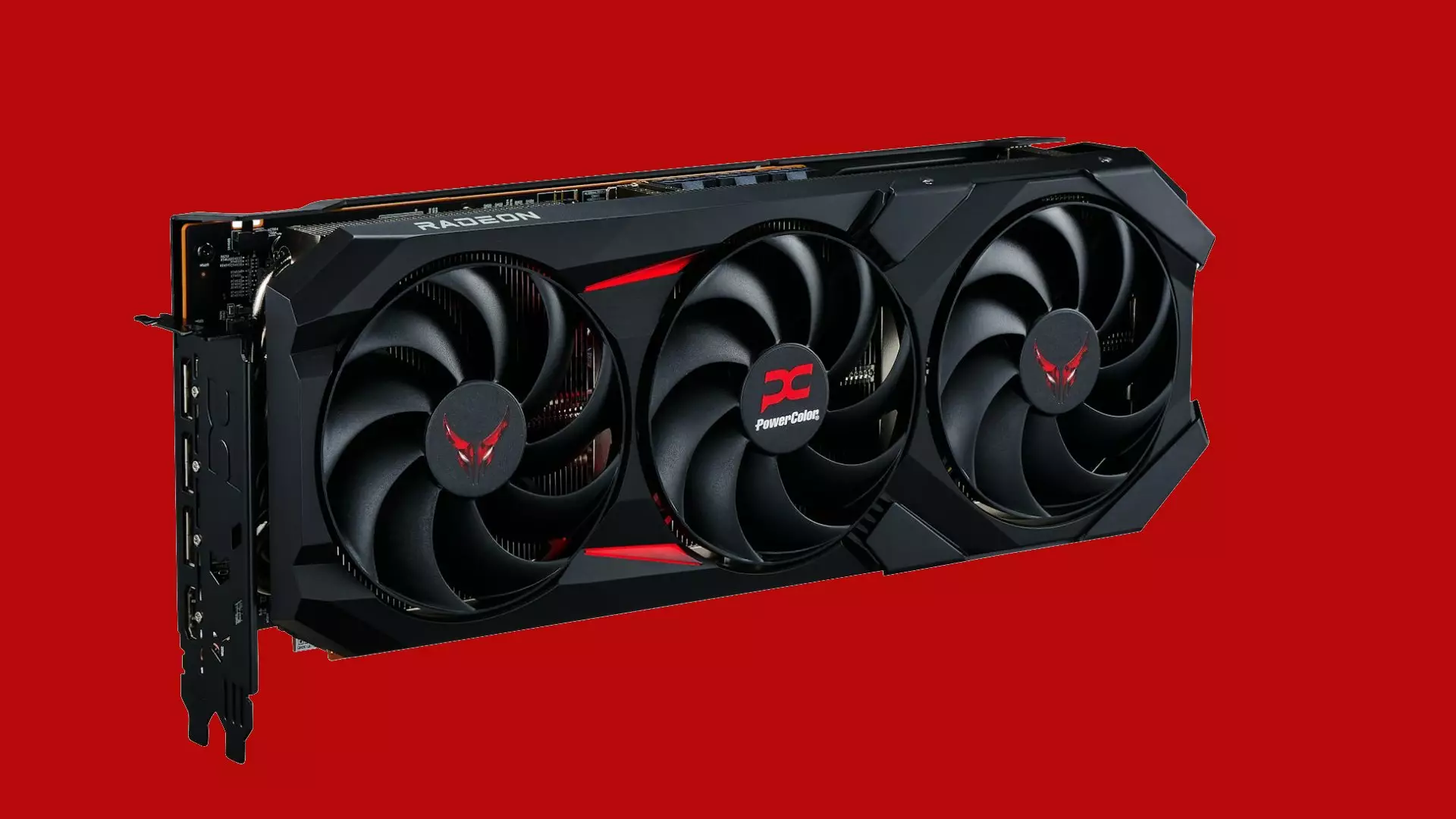The recent leaks highlighting the AMD Radeon 9070 GRE from graphic card manufacturer Powercolor have ignited excitement within the PC gaming community. With images surfacing on Videocardz, gamers are buzzing about the potential of this card, which seemingly retains the aesthetic of its siblings in the RX 9070 series. However, this freshly unveiled variant is garnering particular attention for its unique specifications and positioning in the competitive landscape of graphics cards.
The Radeon 9070 GRE is built on the same AMD Navi 48 architecture that powers both the RX 9070 and RX 9070 XT models. However, there’s a crucial difference: some of its performance features are disabled. This has led to speculation about its positioning—will it cater primarily to budget-conscious gamers yearning for an entry into high-performance 4K gaming? With a reported count of 3,072 Stream Processor cores compared to the 3,584 and 4,096 of the vanilla and XT models, respectively, the GRE is designed to fill a specific void in AMD’s lineup.
Technical Specifications: Breaking Down Performance
The specifications leak suggests that the 9070 GRE will feature a 192-bit memory bus and 12 GB of GDDR6 memory. In contrast, its higher-end siblings boast a more robust 256-bit bus coupled with 16 GB of GDDR6. This variation hints at a conscious strategy by AMD to engage with a segment of gamers who prioritize cost-effectiveness while still wanting to push boundaries in gaming performance.
However, the reduced specifications raise a crucial question: how will this card hold up against competitors, notably the Nvidia RTX 5060 TI? Despite its impressive rasterization capabilities, the GRE may struggle in ray-tracing applications. NVIDIA consistently leads in features such as DLSS 4 and multi-frame generation, which can vastly enhance gaming experiences. Thus, although the GRE will likely outperform its rivals in raw raster performance, it may not deliver the complete experience gamers have come to expect from high-end graphics cards especially when complex tasks like path tracing come into play.
The Pricing Conundrum: What’s Next?
AMD’s strategy could lead the 9070 GRE to be significantly cheaper than its siblings, which sport MSRPs of $549 and $599. Speculations converge on the grounds that the GRE’s pricing might align closely with that of the Nvidia RTX 5060 TI, priced at $379 for its 8 GB variant and $429 for the 16 GB iteration. This proposed pricing plays a significant role in its market positioning—if AMD effectively nails the balance between performance and affordability, they could carve out a solid niche for the GRE.
However, with the historically tumultuous nature of the GPU market, there’s uncertainty around what the actual price range will look like once the card hits the shelves. Gamers are well aware of the challenges in obtaining GPUs at listed prices due to ongoing supply chain complications and high demand. Thus, the actual market price of the 9070 GRE will likely fluctuate significantly from its MSRP.
Prospective Availability: A Limited Release?
Another intriguing aspect of the Radeon 9070 GRE is its initial barrier to entry into global markets. Current intel suggests that this card may launch exclusively in China, which creates a wave of uncertainty over its availability in Western markets. Should AMD later decide to broaden distribution, the GRE could become a major player in the international market.
For now, the official launch date remains under wraps, and with information trickling in, the intrigue continues to build. While the graphics card market is always shifting, AMD’s move with the 9070 GRE could potentially reshape the dynamics between high-performance affordability and cutting-edge technology, suggesting that consumers should keep their eyes peeled for updates. The excitement surrounding the Radeon 9070 GRE signals that competitive innovations are distinctly underway, promising a thrilling period ahead for PC gamers.

